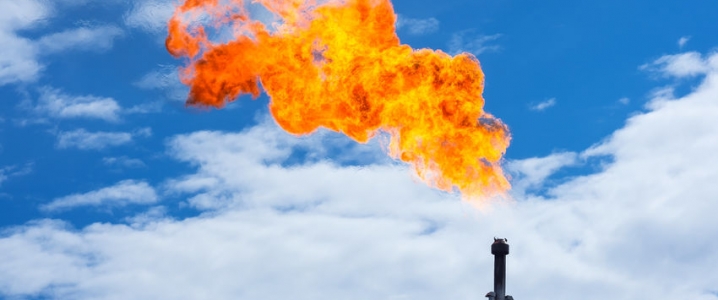A report from the Environmental Defense Fund (EDF) found that the rate of flaring in the Permian basin is twice as high as the industry has been reporting. In 2017, the amount of natural gas that was flared could have met the gas needs of Texas’ seven largest cities. Put another way, “that’s roughly $322 million dollars of natural gas that went up in smoke,” EDF concluded.
EDF used satellite data, estimating that in 2017, oil and gas drillers in the Permian flared roughly 104 billion cubic feet (bcf) of natural gas, or about 4.4 percent of all gas produced. However, the industry only reported burning 55 bcf of gas, or half the amount that EDF found. In the Delaware basin alone, EDF estimates that industry burned nearly 8 percent of the gas that came out of the ground.
The report shines a spotlight on a huge problem with tracking flaring in America’s oil and gas fields: The data is mostly collected via self-reporting by the companies themselves. Drillers send that data to state agencies, and then the U.S. EIA aggregates it into data that is published on a several-month delay.
There is an obvious motivation that might explain why the industry seems to be underreporting flaring rates. Shale drillers are targeting oil production; natural gas is coming up as a byproduct. While there is a bit of a bottleneck for shipping crude oil out of the Permian, the gas bottleneck is even worse. As a result, there is simply too much gas on hand, and no way to move it. The glut has been so bad that regional natural gas prices in West Texas briefly fell into negative territory late last year.
But while drillers may not garner much for their gas, which incentivizes them to just burn it off, there are limits on how much the industry can flare. EDF and S&P Global Platts have speculated that flaring rates may be vastly exceeding the amount reported because drillers want to keep the oil flowing. It’s all about oil, not natural gas. Related: Global Deepwater Oil Production To Hit New Record In 2019
“The satellite analysis indicates the [Texas Railroad Commission] is working with incomplete and faulty data,” Colin Leyden, Senior Manager for State Regulatory & Legislative Affairs at EDF, wrote in a commentary last month. “The RRC is statutorily bound to prevent waste and pollution, and Texans have the right to know just exactly how much waste and pollution is occurring through the extraction of our state’s natural resources.”
The Railroad Commission grants companies waivers to flare gas for six months after a well comes online. But they also have repeatedly issued extensions, demonstrating a leniency towards the industry.
EDF suggested that the Texas Railroad Commission should treat wasted gas as a viable resource, eliminate permanent flaring permits, require the industry to incorporate new technologies into their operations, and improve reporting requirements. The environmental group also said that the state should eliminate the tax exemption on flared gas – as it stands, companies don’t pay tax on flared gas, but if that exemption were scrapped, companies would have a greater incentive to capture the gas.
The problem is not isolated to the Permian. North Dakota has also seen a surge in flaring, aided by some lax rules from the state. The Trump administration has also thrown the oil and gas industry a lifeline, reversing an Obama-era regulation on capping methane emissions from oil and gas operations. The New York Times, in an eye-opening investigation in late December 2019, explored the on-the-ground consequences of the extraordinary rates of gas flaring in North Dakota. Related: Breakneck LNG Demand Surge In China Is History
The industry has long fought against federal regulations, arguing that operators can take action on their own, especially since they have an incentive to capture the gas in order to sell it. But that argument kind of breaks down when confronted with the data on soaring rates of flaring. “If it’s inconvenient they’ll just flare it,” Colin Leyden of EDF told the Houston Chronicle. “There’s been a problem since 2014, so what is a reasonable amount of time for the industry to solve this?”
The Texas Railroad Commission gave a pat response to the Houston Chronicle when asked about the new data. “The RRC takes enforcement action against any operator found in violation of our rules or permit conditions,” said Ramona Nye, an agency spokeswoman.
The retreat by the federal government gives the states a lot more leeway to let the industry off the hook. Ultimately, it would seem that regulators in Texas and North Dakota are reluctant to kill off the golden goose. Strict enforcement of caps on flaring would force shale drillers to curtail oil production, but that doesn’t seem to be in the cards.
By Nick Cunningham of Oilprice.com
More Top Reads From Oilprice.com:
- Global Deepwater Oil Production To Hit New Record In 2019
- U.S. Oil Rig Count Falls Sharply As Oil Prices Climb
- Global Outages Boost Oil Prices



















One reason the term f a k e n e w s is used so often these days is that news outlets seem so desperate for sensational headlines that they are willing not only to exaggerate but to cross the boundaries of veracity.